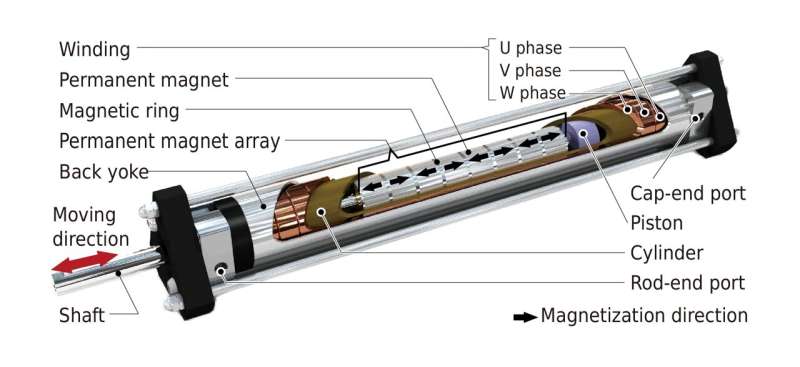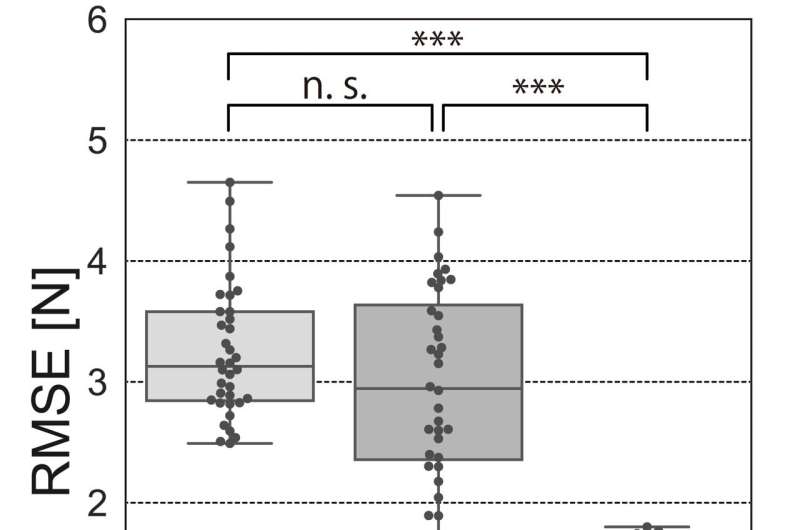This article has been reviewed according to Science X's editorial process and policies. Editors have highlighted the following attributes while ensuring the content's credibility:
fact-checked
proofread
Fusion hybrid linear actuator: Concept and disturbance resistance evaluation

Addressing a fundamental challenge in robotics, Associate Professor Yoshihiro Nakata of The University of Electro-Communications, Japan, and Senior Researcher Tomoyuki Noda from the Brain Information Communication Research Laboratory Group at the Advanced Telecommunications Research Institute International, have developed a pioneering technology to facilitate the integration of hybrid actuation systems. Hybrid actuation, which pairs two actuators operating on different principles to yield superior performance, has been historically difficult to incorporate into robots due to the complexity of its structure.
To tackle this issue, they have conceptualized the "Fusion Hybrid Linear Actuator" (FHLA), a design that combines structures to convert the energy of multiple actuators into force, synthesizing these forces internally as though they originate from a single actuator. Specifically, an actuator merging a pneumatic cylinder and a direct-drive linear motor has been developed based on this design concept, effectively blending the benefits of both systems while reducing their overall footprint.

Experimental results have demonstrated that this actuator significantly improves the ability to maintain a constant contact force against disturbances in motion over a wide range of forces, compared to systems using only air or electricity as a power source. This suggests a superior force control performance at the point of contact, offering a significant enhancement over conventional actuators.
In this research, the team not only presented the new concept of FHLA but also discussed its design strategy requirements and structural optimization processes, marking a considerable stride in the field. This breakthrough research has been published in the IEEE/ASME Transactions on Mechatronics, presenting a significant step toward more versatile and efficient robotics in the future.
More information: Yoshihiro Nakata et al, Fusion Hybrid Linear Actuator: Concept and Disturbance Resistance Evaluation, IEEE/ASME Transactions on Mechatronics (2023). DOI: 10.1109/TMECH.2023.3237725


















